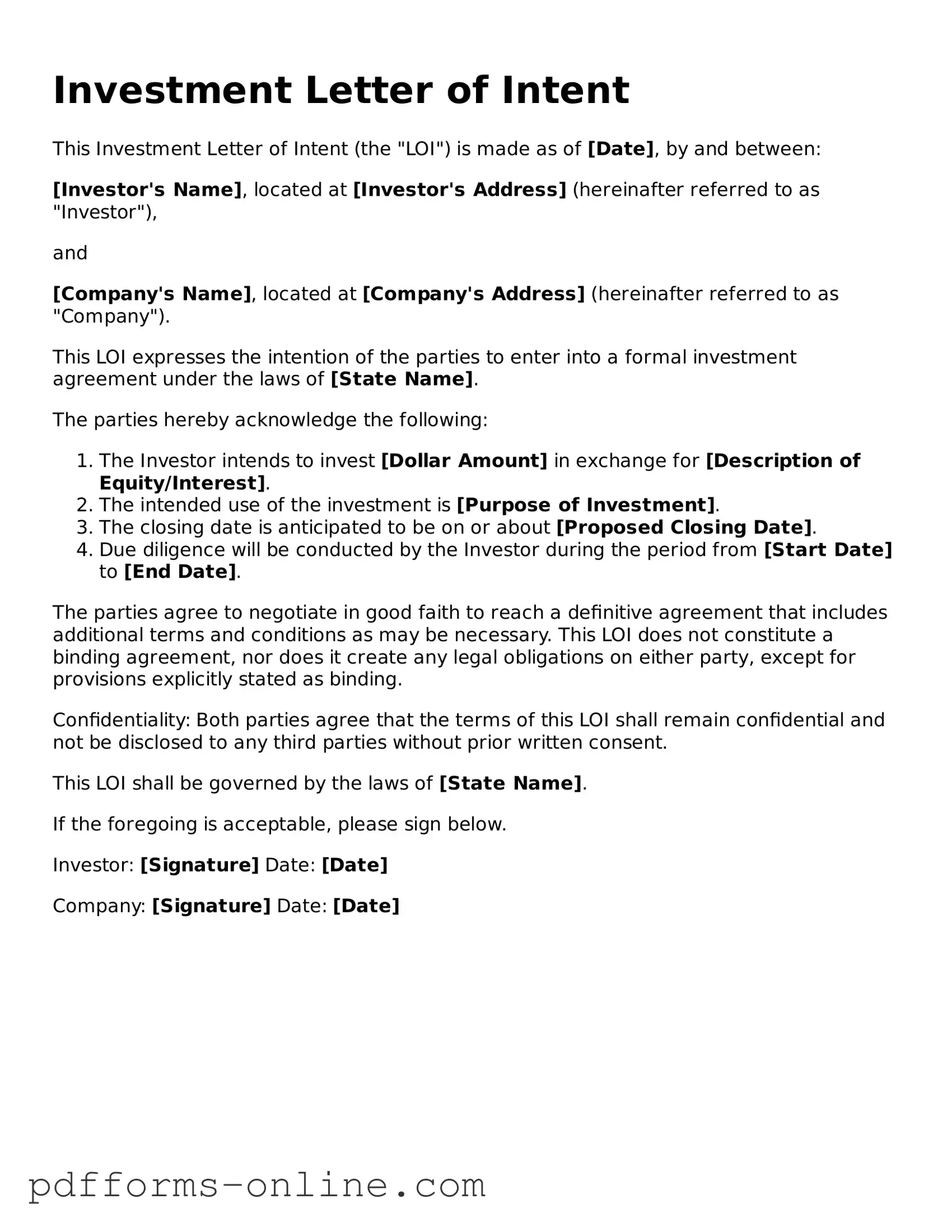Investment Letter of Intent
This Investment Letter of Intent (the "LOI") is made as of [Date], by and between:
[Investor's Name], located at [Investor's Address] (hereinafter referred to as "Investor"),
and
[Company's Name], located at [Company's Address] (hereinafter referred to as "Company").
This LOI expresses the intention of the parties to enter into a formal investment agreement under the laws of [State Name].
The parties hereby acknowledge the following:
- The Investor intends to invest [Dollar Amount] in exchange for [Description of Equity/Interest].
- The intended use of the investment is [Purpose of Investment].
- The closing date is anticipated to be on or about [Proposed Closing Date].
- Due diligence will be conducted by the Investor during the period from [Start Date] to [End Date].
The parties agree to negotiate in good faith to reach a definitive agreement that includes additional terms and conditions as may be necessary. This LOI does not constitute a binding agreement, nor does it create any legal obligations on either party, except for provisions explicitly stated as binding.
Confidentiality: Both parties agree that the terms of this LOI shall remain confidential and not be disclosed to any third parties without prior written consent.
This LOI shall be governed by the laws of [State Name].
If the foregoing is acceptable, please sign below.
Investor: [Signature] Date: [Date]
Company: [Signature] Date: [Date]
